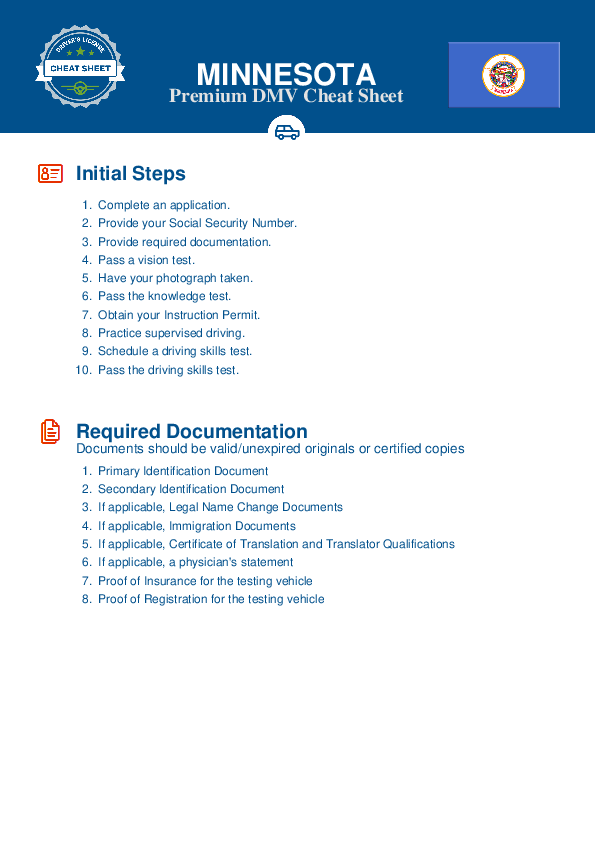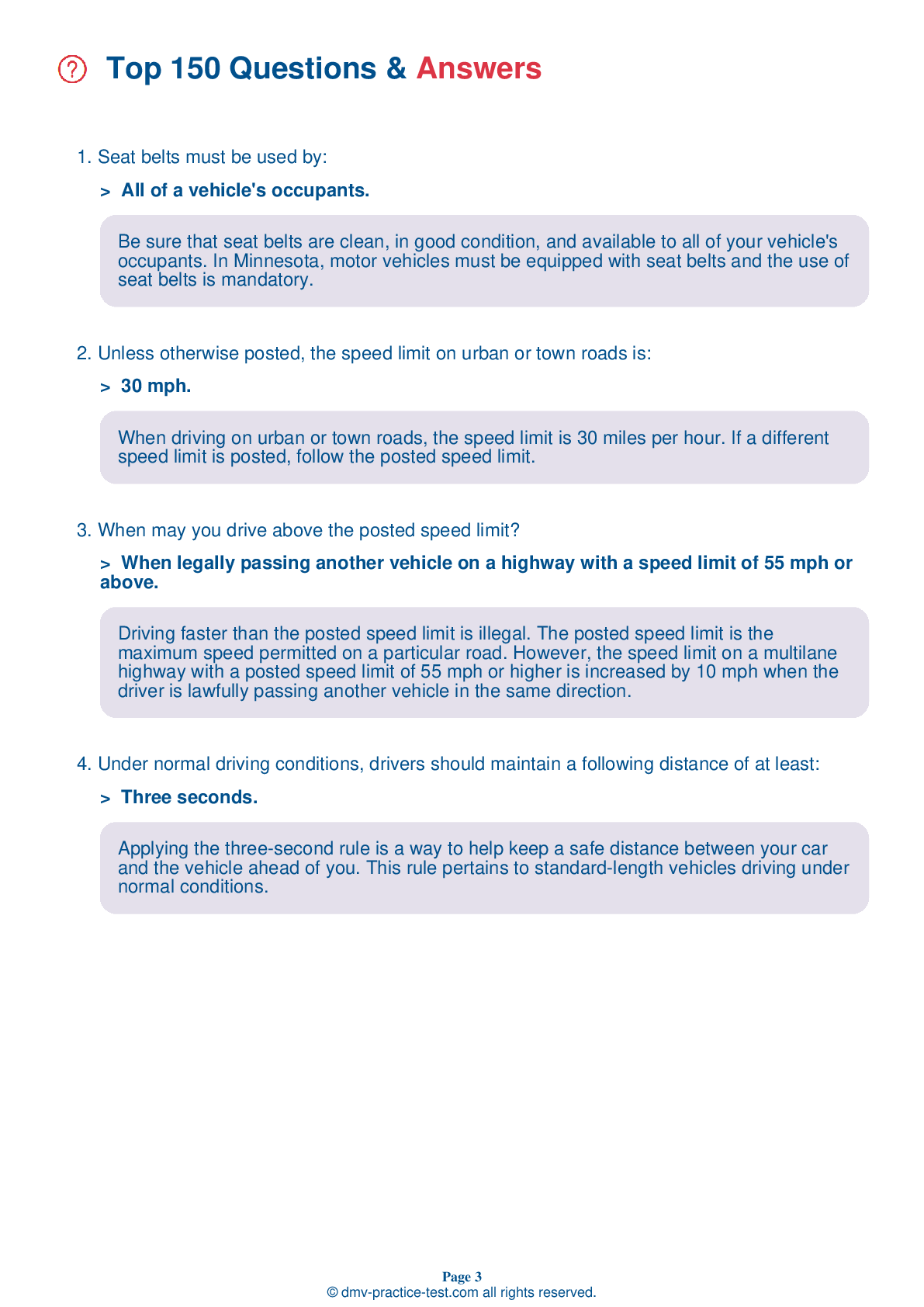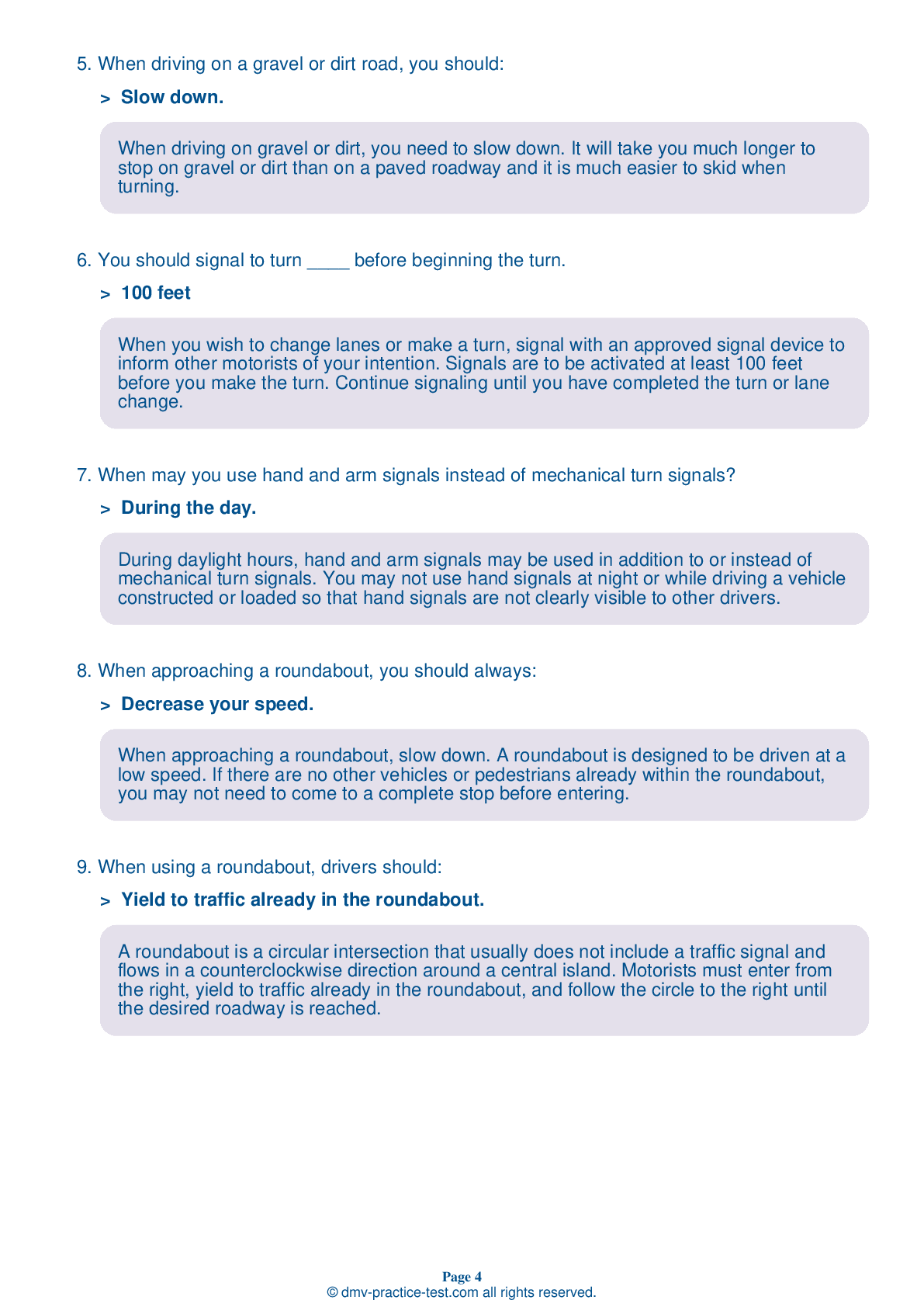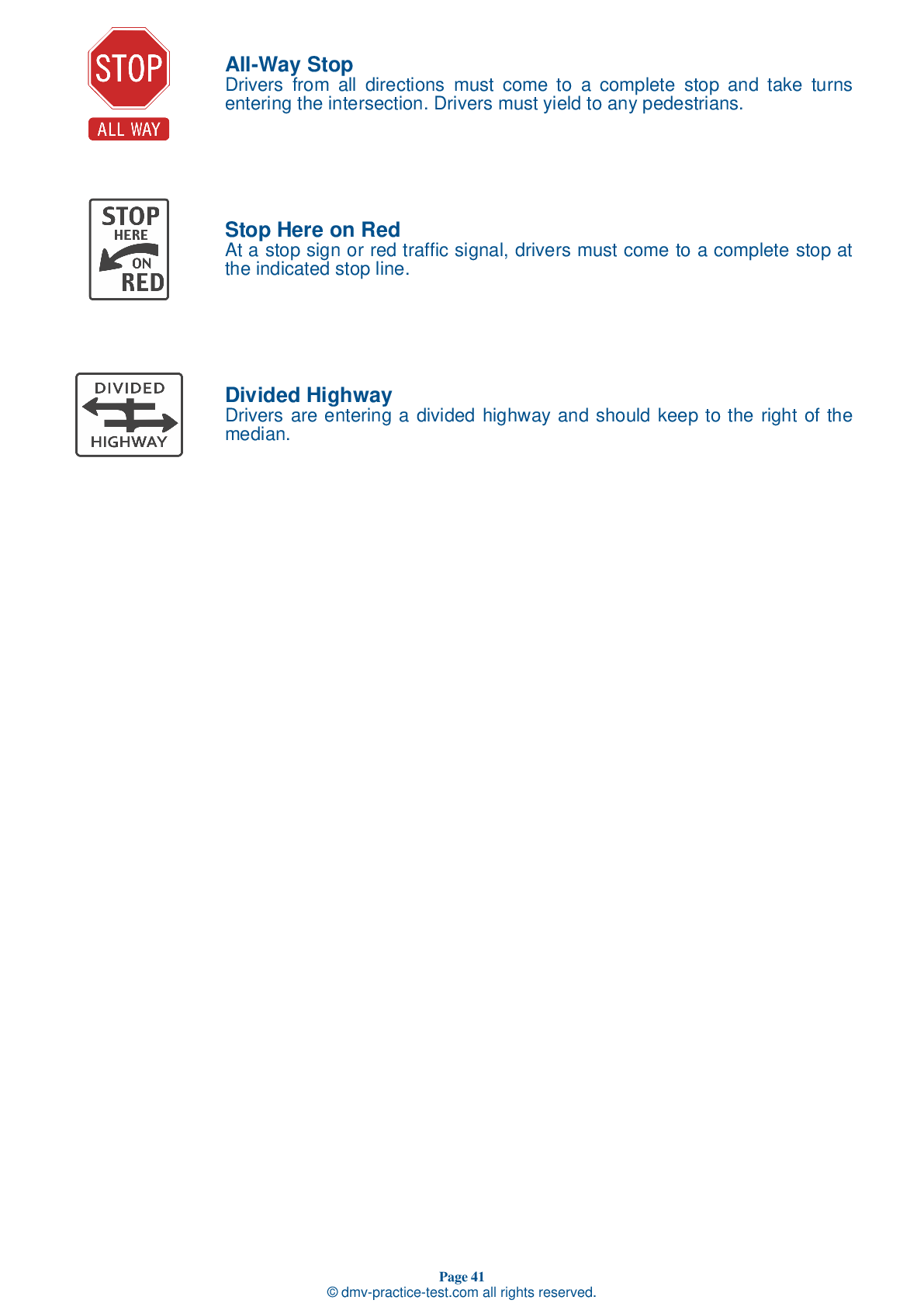FREE Minnesota DMV Practice Test #11 Page 3 of 5
The Minnesota DMV practise examinations have been updated for January 2025. It includes questions based on the Minnesota Driver Handbook's most essential traffic signals and laws for 2025. Use actual questions that are very similar (often identical!) to the DMV driving permit test and driver's licence exam to study for the DMV driving permit test and driver's licence exam.
On the practise exam, each question gets a tip and explanation to help you remember the concepts. The written component of the official Minnesota DMV test will include questions about traffic rules, traffic signs, and driving statutes, as well as knowledge from the Driver Handbook.
To obtain a passing grade, you must correctly answer 32 of the 40 questions. To help you prepare for your instruction permit or driver's licence, take our Minnesota DMV practise test.
The DMV exam is available in several languages.
Using any kind of testing assistance will result in an automatic fail, and the DMV may take additional action against your driver's licence, so stay away from it.
17 . When parallel parking, you should park within ____ of the curb.
When parallel parking, your vehicle should be no farther than 12 inches from the curb. Always park in a place that is visible to drivers coming from both directions.
18 . When driving under snowy or icy conditions, it is safe to use your cruise control as long as your speed is reduced.
You should not use cruise control when driving on snowy or icy roads. Your tires may lose contact with the road and you will no longer have control of your vehicle.
19 . Where may drivers make a U-turn?
A U-turn is a 180-degree turn resembling the shape of the letter U and reversing the direction of travel. You may not make a U-turn unless you can do so safely and without disrupting other traffic.
20 . You notice that the driver in the vehicle ahead of you is driving with one hand and talking to a passenger. You should:
Do not become distracted by looking at passengers, attempting to find something in your vehicle, looking at reading material, sightseeing, or daydreaming while driving. If a driver near you seems distracted, allow them extra space because the risk of an accident is increased by their inattentiveness.
21 . You are turning onto a two-lane road divided by a broken yellow line. You know immediately that:
Yellow centerlines are used to separate traffic moving in opposite directions. Broken lines may be crossed to pass slower-moving traffic when it is safe to do so.
22 . If you are following a school bus or tank truck, you should:
Passenger vans, buses, and larger trucks are required to stop at all railroad tracks, whether or not a train is present. It is illegal to pass any vehicle within 100 feet of a railroad crossing.
23 . This sign means:
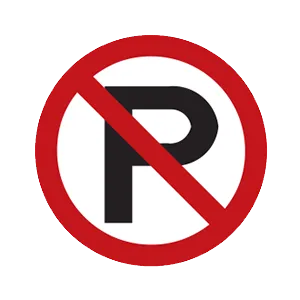
Regulation signs regulate traffic speed and movement, displaying rules which drivers must obey. This regulation sign indicates that parking is not permitted.
24 . A leaky exhaust system in your vehicle is dangerous because it can cause:
The exhaust system carries exhaust gas out of the vehicle and prevents fumes from entering into the passenger compartment. To prevent carbon monoxide poisoning, keep your exhaust system free of leaks. Replace all defective parts immediately.
See the exact questions that will be on the 2025 Minnesota DMV exam.
99.2% of people who use the cheat sheet pass the FIRST TIME
LT gives us an insight on how the cheat sheet provided her with all the study questions she needed before taking her test.
Joe initially studied with the handbook and failed his test, he eventually found us online, studied and pass his test the first time around.
